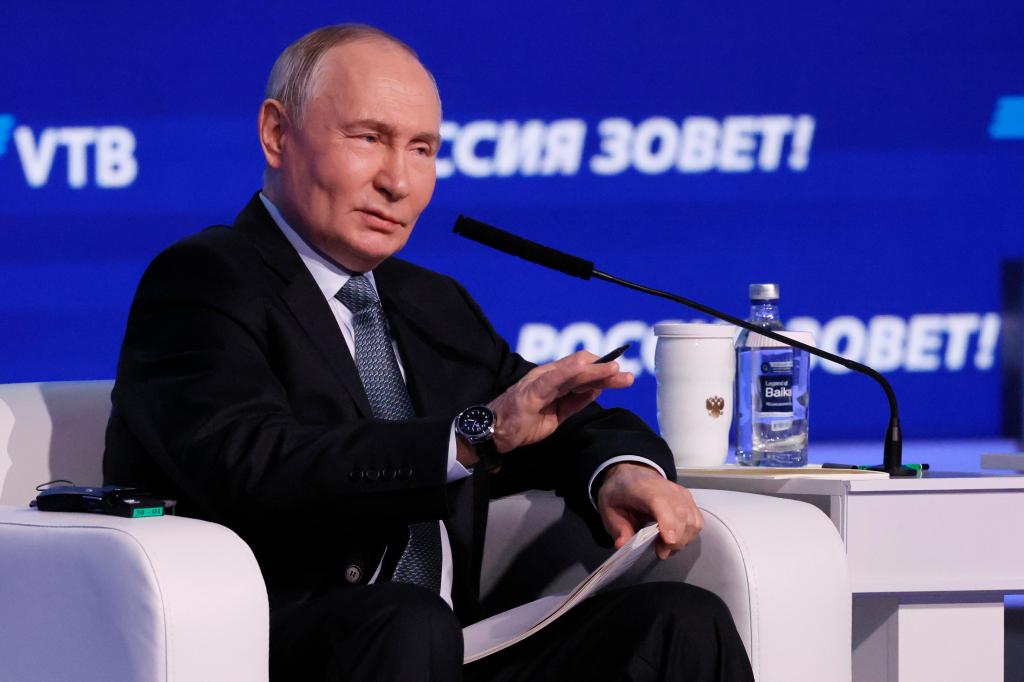After Donald Trump’s win, Russian disinformation aims to drive a wedge between the US and Ukraine

WASHINGTON— As President Joe Biden uses his final days in office to boost Ukraine’s defenses, Russia is playing a different game: spreading disinformation aimed at eroding U.S. support for Ukraine before Donald Trump’s return to the White House next month.
Since the U.S. election on Nov. 5, the Kremlin has used state-run media and its networks of fake news sites and social media accounts to push divisive narratives about the war and America’s Republican president-elect. Analysts say the content, translated into English for American audiences, is intended to turn sentiment against Ukraine at a pivotal time, with the hope of reducing U.S. military assistance and ensuring a Russian victory.
Recent examples include fake videos supposedly showing Ukrainian soldiers burning effigies of Trump or his supporters. One clip depicts soldiers saying Trump must not be allowed to take office and should “never be president again.” Multiple researchers have debunked the video, noting telltale signs of digital manipulation.
A different video claims to show Ukrainian soldiers firing at a mannequin wearing a red “Make America Great Again” hat and a Trump campaign shirt. That video was analyzed and determined to be fake by private analysts and Ukraine’s Center for Countering Disinformation, a government agency that tracks Kremlin propaganda.
Other versions — just as fake — depict Ukrainian soldiers burning Trump’s books or calling him a coward. In the weeks after the election, the clips spread far beyond Ukraine and Russia, circulating among Trump supporters and believers in QAnon, the conspiracy theory that claims Trump is fighting a war against a Satanic cabal of powerful world leaders.
It’s part of Russia’s continued push to divide Americans over the nearly 3-year war in Ukraine and paint Ukrainians as unreliable, dishonest allies, according to analysts who have tracked Russian disinformation and propaganda since the war began. By discouraging American support for Ukraine, the Kremlin is hoping to cut off the most vital source of military assistance that has kept Ukrainian hopes alive since Russia invaded in February 2022.
Early in the war, Russian propagandists portrayed Ukrainian leaders as corrupt and self-serving. Russian state media claimed Ukraine’s leaders held Nazi sympathies — even though President Volodymyr Zelenskyy is Jewish — or were involved in clandestine bioweapons research that Moscow sought to tie to the COVID-19 pandemic. Each false claim was used to justify Russia’s invasion.
“It’s planted by the Russians, this idea that ‘Ukraine is so corrupt it shouldn’t even be a state, and we are the right people to be running this place,’” said Rupert Smith, a retired British general and former NATO deputy supreme commander who now leads a Brussels-based consulting firm called Solvo Partners. “Now this is being used as an excuse for not supporting Ukraine.”
The fake video claiming to show Ukrainian soldiers firing on the Trump mannequin spread on platforms such as X, Telegram and YouTube, getting an early boost from pro-Kremlin news sites before migrating to ones popular with Americans, according to an analysis by researchers at NewsGuard, a firm that tracks disinformation.
Some versions of the video were created long before the election but were passed off as more recent. Within days, the video was receiving hundreds of thousands of views and had been translated into several languages besides Russian and English, including German, Chinese and Polish, NewsGuard found.
According to U.S. intelligence, Russia sought to support Trump in the presidential election, believing he would reduce American backing for Ukraine and perhaps the NATO alliance. The incoming president has praised Russian President Vladimir Putin, criticized U.S. military aid to Ukraine and NATO and promised to end the war in 24 hours, comments that appear to suggest he would press Ukraine to surrender territory now occupied by Russia.
In response to questions about Russia’s role in spreading disinformation about Ukraine, a spokesperson for the Russian Embassy in Washington referred to past statements rejecting any involvement.
In the time it has left, the Biden administration has urged Ukraine to quickly increase the size of its military by drafting more troops and has stepped upweapons shipments while forgiving billions in loans provided to Kyiv. So far, the White House has pushed more than $56 billion in security assistance to Ukraine and expects to send billions more before Biden leaves office on Jan. 20, 2025.
It’s easy to understand Russia’s motives in trying to cut off that supply of aid, said Joshua Tucker, a New York University professor and Russia expert who studies online disinformation. What’s harder to gauge, he said, is the effectiveness of Russian disinformation, especially on social media platforms already crowded with false, bizarre and debunked claims.
One reason that Russia may persist with disinformation targeting Americans is the relative ease and affordability of such operations compared with diplomatic or military alternatives.
Russia likely sees disinformation as part of a long-term effort to undermine America’s global leadership by dividing its people and undermining support for its institutions, Tucker said. Whether the topic is immigration, the government, the U.S. economy or the war in Ukraine, he said, the goal remains the same and goes beyond one election cycle or one candidate.
“I think what they were really hoping for is a contested result with lots of people out in the streets, arguing the election wasn’t legitimate,” Tucker said.
If they couldn’t have that, however, Russia’s disinformation agencies will keep pushing narratives that they believe will inflame Americans and boost their chances in Ukraine, Tucker said.
Originally Published: December 5, 2024 at 7:17 AM CST


